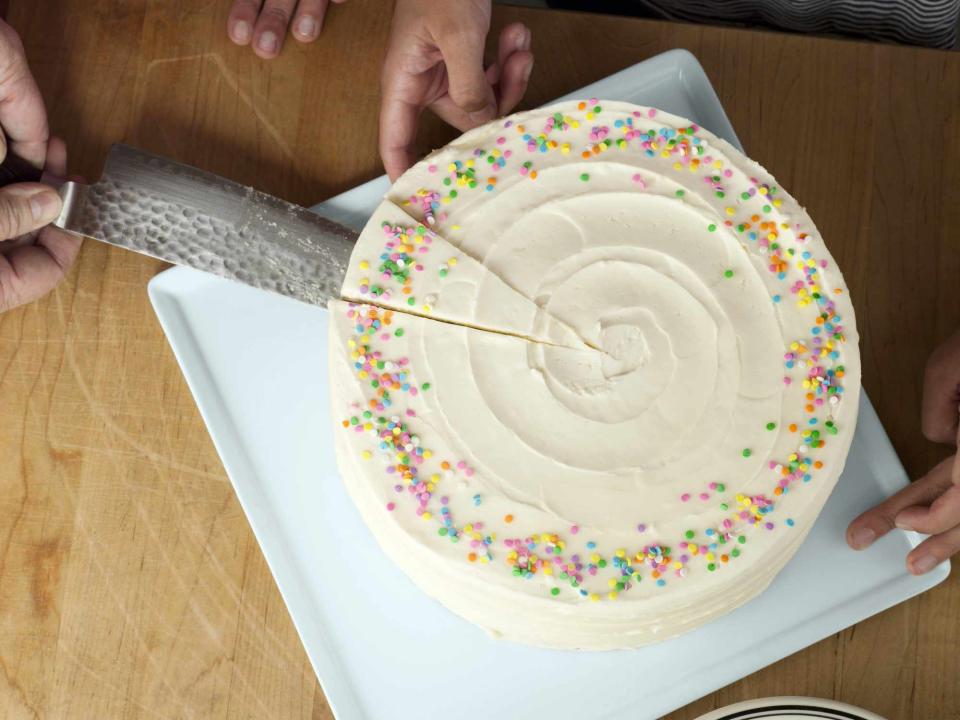How To Cut A Round Cake, According To A Mathematician
We thought Southerners were pretty much experts at cake, until we saw this video on a more scientific way to cut cake and keep leftovers fresh.

One of the great truths in this world is that cake is good. Sure, people may claim that pecan pie or Blue Bell ice cream or turtle brownies are their favorites, but few Southerners would turn down a slice of red velvet or Mississippi mud or white cake with lemon filling. Whether celebrating birthdays or baptisms or marking a funeral, few occasions in the South are complete without a cake. Blackberry jam cakes, Coca-Cola cakes, Texas sheet cakes, Hummingbird cakes, and coconut versions fill the tables at Southern picnics and potlucks and, of course, parties, so Southerners are pretty much experts at cake. Or at least we thought we were. Now, it turns out we may have been cutting them the wrong way this entire time.
Why You Shouldn't Cut Your Cake In Wedges
When faced with a round cake, most of us slice the cake into triangles, serving up wedges for eager recipients. However, according to science, that may not be the best way to maximize the cake and preserve freshness, in the unlikely event that you have leftovers. According to mathematician Alex Bellos, the traditional triangular slice is not the "scientific" way to keep a cake fresh. To prove his point, Bellos gives a nod to a Letter to the Editor from Nature. The letter was sent to the weekly science magazine way back in December 1906 purporting to solve the problem of how "two persons of moderate appetite" can "leave a minimum of exposed surface" after doing their best to eat a "round tea-cake of some 5 inches across." While the easy answer would be to eat the whole thing, the author recommends avoiding the usual method of cutting out a wedge as it is "very faulty in this respect."
Why? Because cutting a wedge leaves two exposed surfaces, which will become dry and crusty in the fridge. The leftovers aren't nearly as moist and tender as on day one.
How To Cut Your Cake 'Scientifically'
Instead, the author recommends cutting the cake in half and then cutting a rectangular slice from the center. That lets the cake be pushed back together to stay fresh, held together with "a common india-rubber band" which "embraces the whole and keeps its segments together."
On the next day, turn the cake 90 degrees and cut another rectangular slice from the center. Once again, push the two sides of the cake back together to preserve freshness. Continue doing this each day until you're down to the edge pieces, which you can finish off with gusto.
To illustrate the century-old "scientific" method, Bellos put together a video following the directions and accompanying illustrations. While it's not the traditional cake-slicing method, it is a clever way to keep cake leftovers fresh—although "cake leftovers" aren't all that common around here.
For more Southern Living news, make sure to sign up for our newsletter!
Read the original article on Southern Living.

